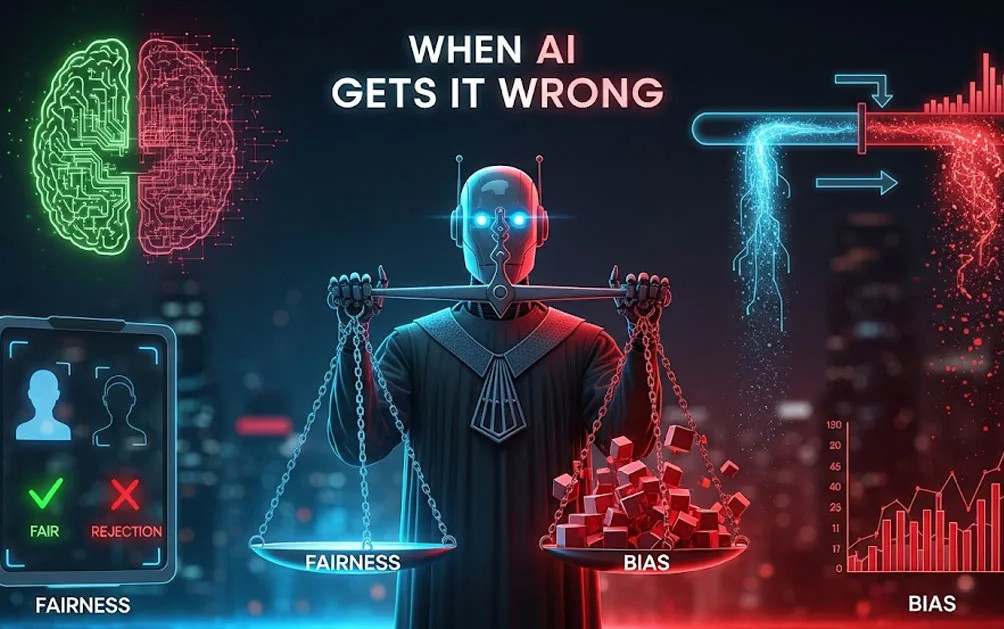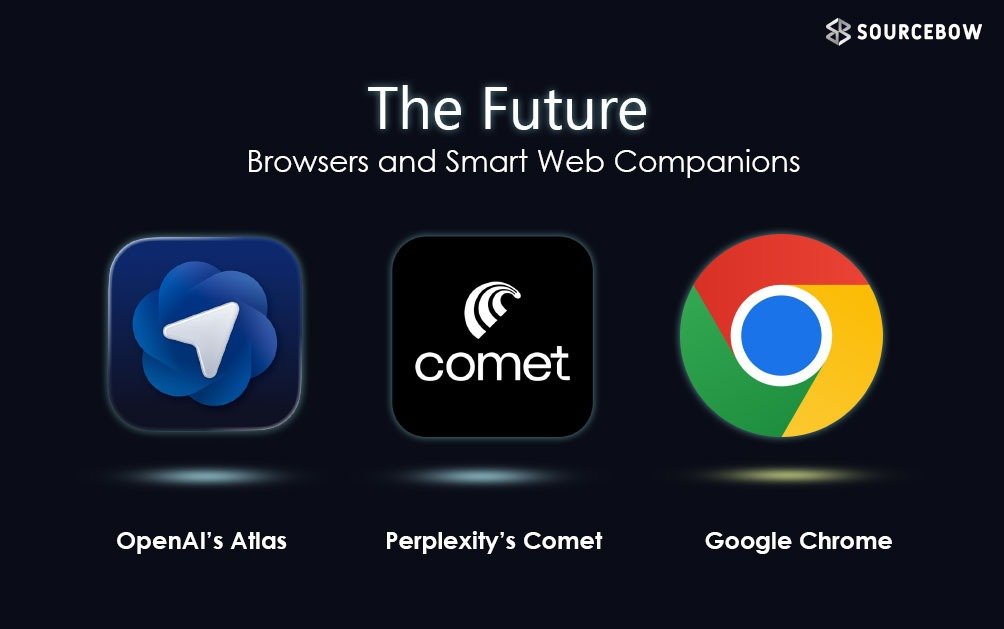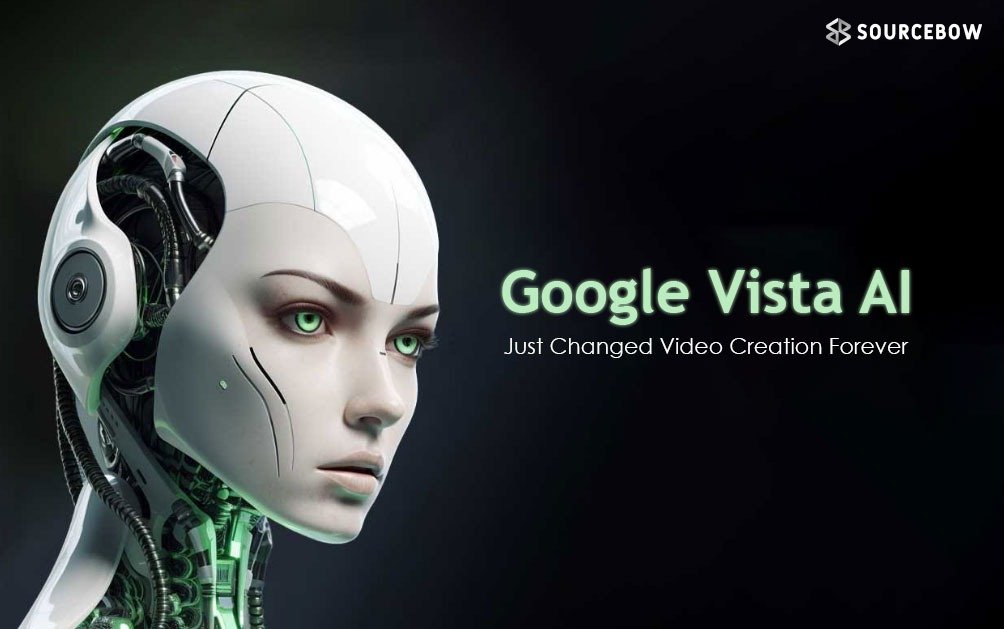Everyday Examples of Bias in AI
Imagine sitting in a busy restaurant, asking your voice assistant to set a reminder. It works perfectly. Now someone else at the next table asks the same thing, but their request fails. The assistant does not misunderstands their words or doesn’t respond at all. What is the difference? Their voice, accent, pitch, or patterns do not match the data that trained the system.
This small scene says something bigger: AI does not always work the same for everyone. Factors like accent, gender, or even racism can affect performance. And while it might feel surprising, studies and real world stories prove this bias is real.
How Technology Learns Our Flaws
Many people assume technology is naturally fair. After all, it is built on logic, math, and code. But AI is different. These systems are trained on huge amounts of real world data, and that data carries human’s mistakes. Biases, inequalities, and unfair patterns in society become baked into the models. When applied, AI repeats those same patterns. It doesn’t know right or wrong—it just mirrors what it was fed.
What Speech Recognition Reveals
One clear example lies in speech recognition systems. A Stanford study in 2020 tested models from five big tech companies—Apple, Amazon, Google, IBM, and Microsoft. For white speakers, the average error rate was 19 percent. For African American speakers, it jumped to 35 percent. That’s not a small gap. Imagine trying to use a tool every day that misunderstands one in three words you say. For some, this makes technology frustrating, or even unusable.
And it’s not just accents. People with speech impediments like stuttering or aphasia often face error rates of up to 50 percent. Words a human would easily understand are misheard by machines. What’s supposed to be a convenience turns into a barrier.
The Trouble With Facial Recognition
Facial recognition systems show the same problem. A 2018 study found less than 1 percent error for light-skinned men. But for darker-skinned women, error rates shot up over 34 percent. That gap isn’t just a technical glitch—it can affect lives. Law enforcement agencies now use facial recognition to identify suspects. If these systems misidentify people of color more often, the risk of wrongful arrests grows.
This isn’t theoretical. In 2020, Robert Williams, a Black man in Detroit, was wrongfully arrested. The only evidence against him was a faulty match from facial recognition. He was innocent, yet still had to face the trauma of being accused.
Bias in Hiring and Workplaces
The hiring process has also seen bias seep in. Amazon once tested an Bias in AI hiring tool, only to find it downgraded resumes containing terms like “women’s chess club”. At the same time, it favored resumes with words more often linked to men. Here’s the catch—gender wasn’t even an input in the model. The system simply learned patterns from historical hiring data, which already carried gender bias. So, it reproduced the same unfairness.
When Healthcare Gets It Wrong
The impact of bias in AI isn’t just about convenience or jobs—it can touch life and death. In healthcare, AI is being used for diagnosis and treatment. One Stanford study found a model designed to predict whether patients needed extra care often underestimated the severity of illness for Black patients. Race wasn’t an input, yet the system inferred it and mirrored biases from medical records.
Skin condition detection models also show similar gaps. Because many are trained mostly on lighter skin data, they often fail to detect issues on darker skin. For diseases like melanoma, where late diagnosis can be fatal, this isn’t just a technical flaw—it’s a serious risk.
Why Averages Hide Problems
Developers usually measure AI performance by averages. A model that works 90 percent of the time might seem great. But what about the 10 percent? If that group is mostly marginalized communities, then “90 percent accurate” hides a much deeper problem. It’s easy to celebrate broad success rates, but averages can erase the people who are consistently left out.
Fighting Back With Audits and Transparency
So how do we fix this? One approach is algorithmic testing. Before deployment, models should be tested across various type of datasets to check for bias in AI . The Gender Shades project, for example, understand facial recognition tools and expose their racial and gender biases. This forced major technical companies to make improvements in their models.
Transparency is another key step. Companies should share details about the details of their training data and explain how their systems were built. Without this, it is nearly impossible to hold Bias in AI accountable.
And then comes the source training data itself. If datasets aren’t better, no amount of changes will make models fair. Currently, most datasets move toward English speakers, rich nations, and lighter skin. That have to change.
Building Inclusive AI Together
A more better future means involving under represented voices when creating datasets and models. Projects like Mozilla’s Common Voice are a good example of this, where people around the world contribute audio clips in different voices to make speech recognition more better. This is not just a task for researchers or policymakers. Everyone has a role in this to make better models.
Bias in AI may be hidden under code and complex math, but it shapes real-world outcomes. Just because a machine made a decision doesn’t mean it was fair.
Final Thoughts
Bias in AI isn’t a small bug to patch—it’s a reflection of society’s own inequalities. These flaws won’t vanish on their own. They need active work, constant auditing, and honest conversations. The push for fairness in AI is also a push for fairness in the world around us. By fixing these systems, we don’t just improve technology—we take steps toward a fairer society.





